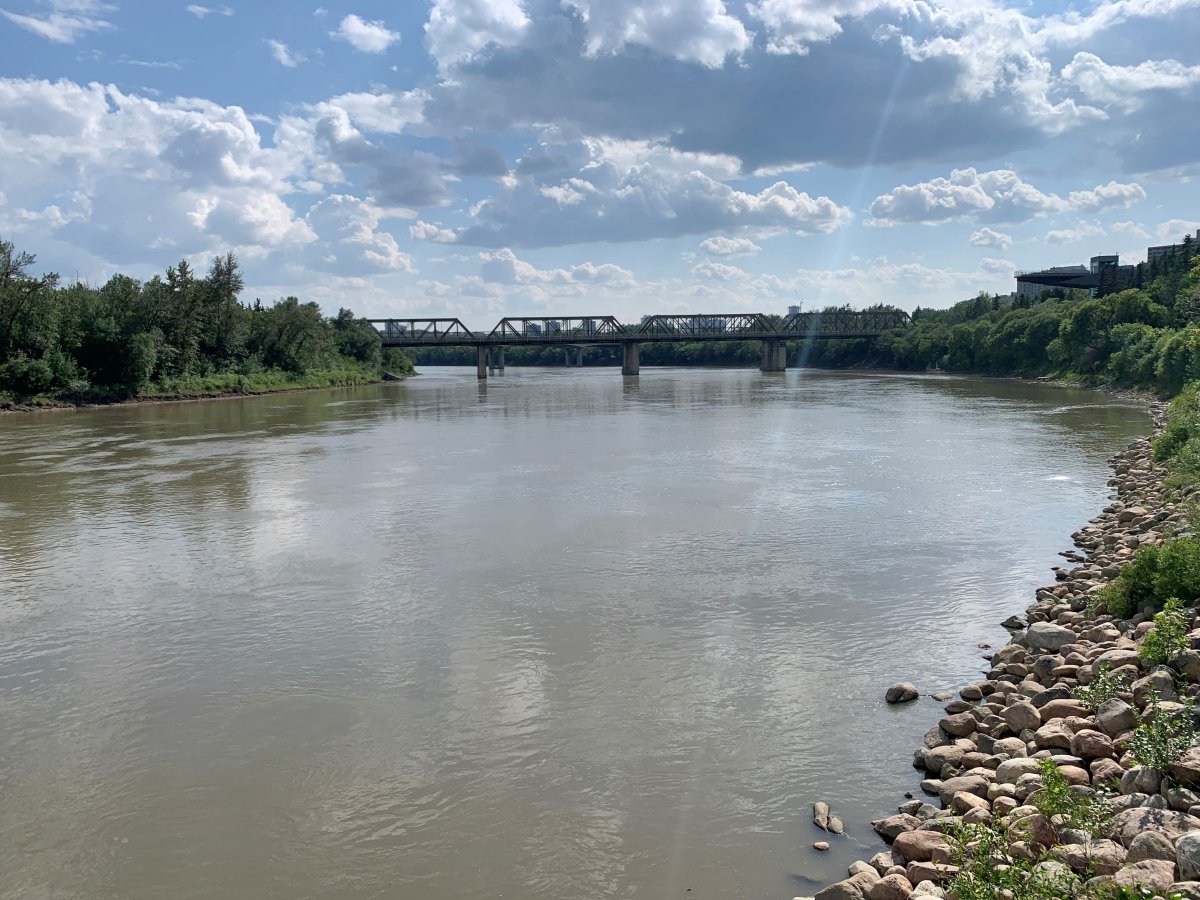Albertans are advised to be careful around the North Saskatchewan River and its tributaries in the coming days.

The City of Edmonton said due to the continuous rain, the river and its shorelines, along with the city’s creeks, may make nearby trails unsafe.
Edmontonians, as well as people up and downstream from the city, may expect high water levels and increased current flow in the coming days.
“This may cause some flooding in areas running along the North Saskatchewan River and other natural waterways,” the City of Edmonton said in an news release Thursday.
David Watson, a river forecast engineer with Alberta Environment & Protected Areas, said the North Saskatchewan River isn’t actually too high right now and isn’t expected to rise significantly from the intense rainfall that fell in recent days — however, the same can’t be said the tributaries within Edmonton.
“The recent rain happened in a pretty widespread area in Alberta — but pretty locally in Edmonton, the rain was a lot higher. So a lot of our local creeks like Mill Creek, Blackmud Creek, Whitemud Creek, they did come up and they are kind of at their peak right now,” Watson said.
“Those water level changes aren’t really enough to impact the North Saskatchewan River, but the smaller tributaries in Edmonton are definitely high right now.”
The city said it closed the Mill Creek Ravine trail system north of 76 Avenue to Connors Road on Thursday morning. Other low-lying trails may be closed on short notice, the city added.
Watson said water levels on the city’s creeks should come down fairly quickly.
“Typically in urban runoff scenarios with just urban drainage and concrete and that sort of deal, the river levels tend to peak fairly quickly and then kind of recede very quickly.
“I wouldn’t expect them to remain high for more than a few days.”
While the river levels typically begin to rise in Edmonton in June as the annual snowpack begins to melt in the Rocky Mountains to the west, Watson said that isn’t a factor in changes to the city’s waterways right now.
“Rainfall is the primary driver of of this event, particularly the local watercourses in Edmonton,” he said, adding the river may rise slightly in the coming days as rain from the foothills and headwaters makes its way into the main river.
Before the recently rainfall, Wason said the North Saskatchewan was actually sitting around the bottom range of average for this time of year.
“Flow on the North Saskatchewan right now was around 295 cubic metres per second. A normal flow for this time of year ranges anywhere from 225 to about 500 metres cubed per second. So there’s a big natural variability in water levels this time of year.”
June and July are the biggest rainfall months in Edmonton and Watson said the precipitation is welcome news for many.
“It’s nice to see this widespread rain system bringing the soil moisture and rivers kind of back up into the normal ranges. Some relief to the firefighter folk, hopefully, and we’ll likely see a few more rain systems before this rainy season is out.”
When water levels are high, the city said Edmontonians should:
- Stay out of the water
- Stay away from low-lying areas along the North Saskatchewan River and other natural waterways, until the water recedes and any necessary cleanup can occur
- Obey all trail closure signage
- Refrain from allowing pets near the river and creeks during this time
- Keep watercraft off the river due to fast moving water, strong currents and debris in the water




Comments